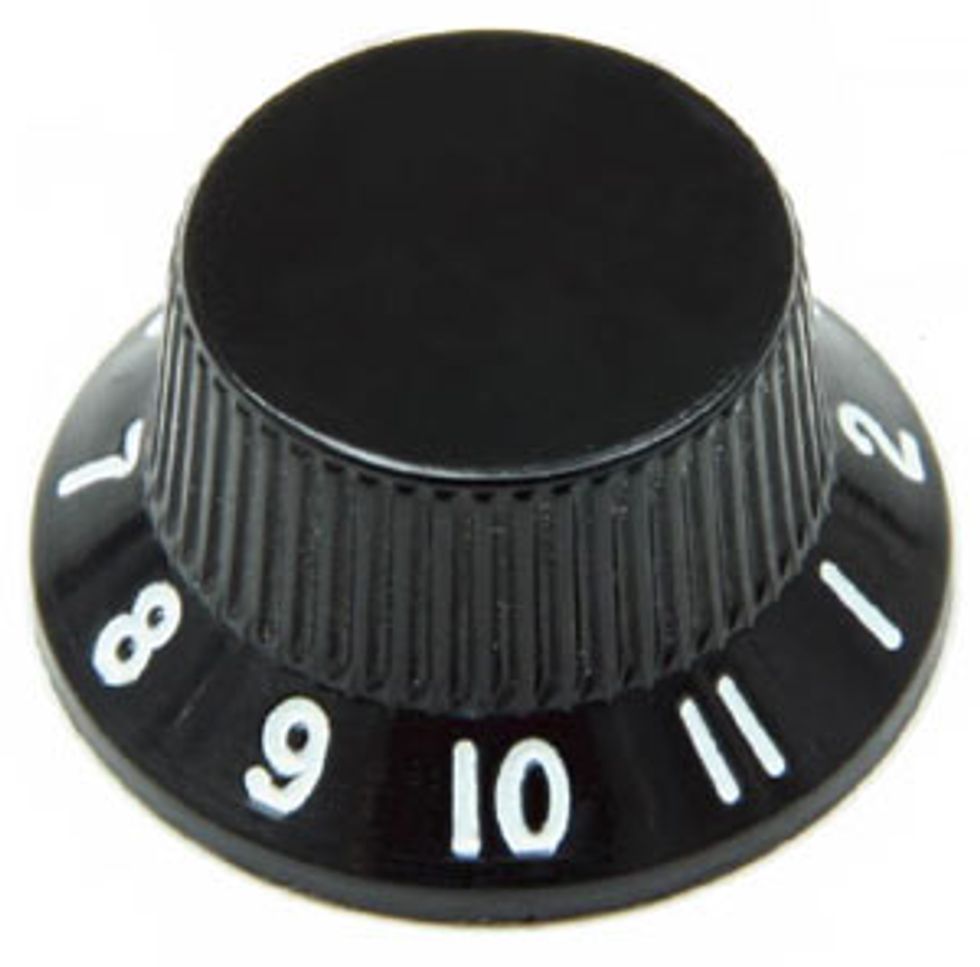This month let’s take a look at our old friend distortion and his little brother overdrive. The ‘50s saw the beginning of an ongoing attempt to make amps louder
 This month let’s take a look at our old friend distortion and his little brother overdrive. The ‘50s saw the beginning of an ongoing attempt to make amps louder and louder, and gentlemen like Mr. Jim Marshall and Mr. Leo Fender were happy to oblige, making bigger and bigger amps in this ongoing quest. Through the decade and into the next crowds at rock n’ roll shows rapidly increased, with things getting really out of hand at Shea Stadium in 1965, when four British boys played there, then again at a little, muddy outdoor gig a few years later, taking place about two hours north at Max Yasgur’s farm.
This month let’s take a look at our old friend distortion and his little brother overdrive. The ‘50s saw the beginning of an ongoing attempt to make amps louder and louder, and gentlemen like Mr. Jim Marshall and Mr. Leo Fender were happy to oblige, making bigger and bigger amps in this ongoing quest. Through the decade and into the next crowds at rock n’ roll shows rapidly increased, with things getting really out of hand at Shea Stadium in 1965, when four British boys played there, then again at a little, muddy outdoor gig a few years later, taking place about two hours north at Max Yasgur’s farm. From what I can see, two major concepts developed from these fortuitous events. First was the glorious sound of an overdriven amp. The second was the realization that amp placement had been almost an afterthought. Brian Lionman and I have covered amp placement in previous articles, but the executive summary is the typical backline is generally not the best place to put amplifiers. Dig around a little and check out the previous columns online to learn more.
But back to the subject at hand; as amps were turned up, the signals became more and more distorted. This was due to overdriving the preamp tubes into saturation. Ironically, at the time amp manufacturers were shooting for “distortion free” amplifiers, and although the larger Fender and Marshall offerings came close to that claim, few guitarists of the time could afford them, instead relying on smaller combo amps. Many of these diminutive tube monsters are highly sought after today and sound great without ripping your head off. A smaller, low-wattage amp will overdrive very quickly, giving you those distorted sounds easily. A 100-watt behemoth needs to be cranked to ear-bleeding levels to even begin to breakup unless it is equipped with a massive preamp stage and possibly a master volume circuit to keep the levels reasonable.
As a preamp tube is given more signal it begins to saturate. In this case, as the saturation point is reached, so is the tube’s maximum electron flow; it’s the tube’s way of saying, “I can’t give ‘er no more, Captain!” The resulting distortion is a function of overdrive. So, to achieve great tube distortion, all one has to do is introduce a big whopping signal into the preamp tubes. But this needs to be qualified; the cleaner the signal here, the better. Many amplifiers have two or three tube preamp stages to kick the signal up with an unfortunate side effect – noise.
As we have learned, overdrive causes distortion, but it can also be the source of unwanted noise. The introduction of gain into the discussion would now be appropriate. Gain is often incorrectly thought of as volume, and in some cases, an increase in gain will also have a resulting increase in volume. But gain must be viewed in relation to where it is in the circuit. In the majority of situations, gain is near the beginning of the signal path, found at the front of most pro audio gear and as part of the front stage of most amps. Gain must also be considered relative to the ability of the corresponding stage where it is applied. The capability of a preamp tube to lift signal is certainly smaller than a power tube, so an increase of the same amount of gain to a preamp tube may cause that tube to saturate, while the power tube may simply get louder.
Another aspect of gain comes into play with respect to a particular circuit’s power supply parameters. You may have heard the term “power rails.” This can be a somewhat technical issue, but in a nutshell, rails are the upper and lower limits of clean power to the circuit. Push the limits and you will be greeted with distortion. For tubes this overdrive usually has good results. With solid state circuits the resulting sound is usually undesirable. A general way to think of gain is to remember that you will only get louder up to a certain point, depending on the capability of the circuit, after which it will add to the amount of distortion, or pushing out of bounds. In comparison, volume continues to get louder and louder, regardless.
Now, what would happen if we were to increase the size of the signal coming into the power tubes, say through an effects loop? In this case things will get considerably louder. But what about power tube distortion? Power tubes pushed to their limit can be extremely musical – think of a cranked ’69 plexi or an AC30 all the way up. The power tubes are now at or near the point of distortion because they have been overdriven. Make sense?
The old adage of “tubes rule” still holds true, and we’ll cover more on this subject in the months to come, as well as looking at other ways to get distortion. We’ll also take a look at some of the pitfalls inherent in this quest and look at some their solutions. Until then, remember to pick that guitar up and play, and that if you can believe it, you can do it.
Gary "Sarge" Gistinger
President, Creation Audio Labs, Inc.
creationaudiolabs.com


